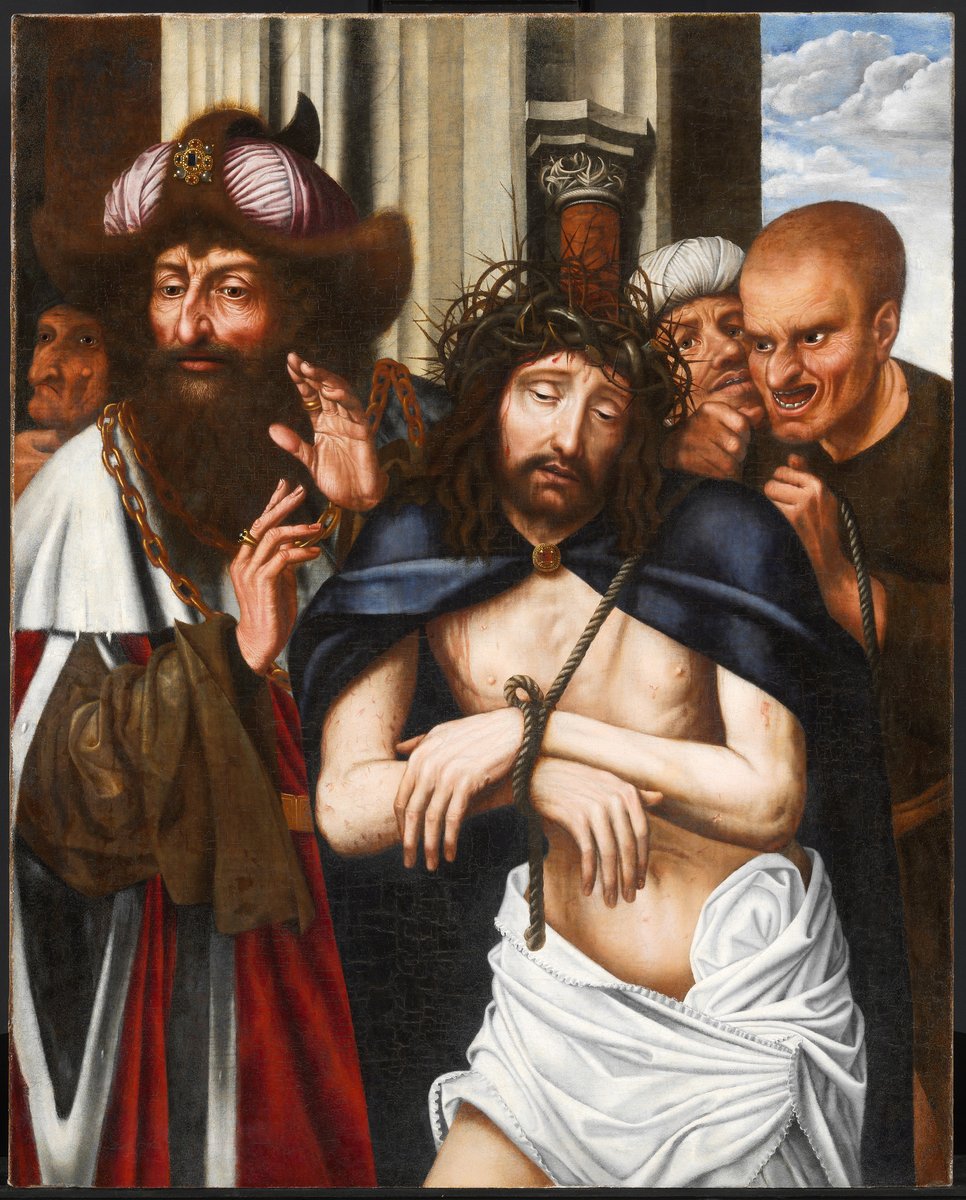
Ecce Homo
Old Master Paintings
| Artist | |
|---|---|
| Culture | Netherlandish |
| Date | mid-1480s |
| Object type | painting |
| Medium, technique | oil on oak |
| Dimensions | 33.7 × 23.9 cm |
| Inventory number | 4327 |
| Collection | Old Master Paintings |
| On view | Museum of Fine Arts, First Floor, European Art 1250-1600, Cabinet 20 |
Michiel Sittow, who spent the later part of his life in his hometown Tallin (Reval), can be ranked with the most accomplished Netherlandish painters. He spent his formative years in Bruges, one of the most important cultural centres in the South Netherlands in the 15th and early 16th centuries. Thanks to his great successes, he was summoned to Spain in 1492, where he was in the service of Isabella, Queen of Castile and León for a decade, and collaborated with Juan de Flandes (ca. 1465-1519). A trip to England has also been proposed on the basis of portraits attributed to him representing Catherine of Aragon (Vienna, Kunsthistorisches Museum) and Henry VII (London, The National Portrait Gallery). He travelled to Denmark, too, where he certainly painted Christian II, King of Denmark. A portrait of the king now in Copenhagen (1515, Staatens Museum for Kunst) is probably a replica of this lost work.
Although there is no documentary evidence, the strong similarity of his Virgin type to that by Hans Memling, leading painter in Bruges (1440-1494), leads us to believe that Sittow was a pupil of him. The present panel is clearly inspired by Memling’s Virgin and Child in the Diptych of Maarten van Nieuwenhove (Memlingmuseum, Bruges), which is dated 1487: the Budapest painting faithfully follows the gestures of the figures, such as the Virgin’s hand holding an apple in a mannered way and the child seated on a parapet with an outstretched leg, in a reversed composition. The charming pose of the Child picking his own big toe can also be derived from a lost composition by Memling known in different versions: the one produced in the masters’ workshop (The Metropolitan Museum, New York) and the one by Juan de Flandes (private collection). But the BudapestVirgin and Child also shows the idiosyncratic features of Sittow’s art, such as a very fine modelling with soft, smoke-like shadows and the rounded features of the Virgin differing from Memling’s elongated oval female faces.
The Budapest painting comes from the collection of Count János Pálffy. The Hungarian nobleman of strong romantic attitude established a rich art collection which he placed in his various castles. Apart from excellent Italian paintings, the collection also contained early Netherlandish panels, some of which represent the charming and intimate theme of the Virgin and Child.
Text: © Ágota Varga
Pigler, Andor, Katalog der Galerie Alter Meister, 1-2. Museum der Bildenden Künste, Szépművészeti Múzeum, Budapest. 2, Akadémiai Kiadó, Budapest, 1967, p. 648.
This record is subject to revision due to ongoing research.